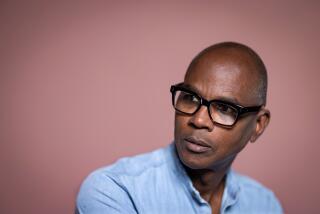WILSHIRE CENTER
The aesthetic terrain between Kurt Schwitters and Joseph Cornell or, to bring it closer to home, George Herms and William Dole is so well populated, who’d have thought there was space for another artist in the collagist/assemblagist subdivision? Well, there’s always room for talent, and Larry Hurst has used his to create a place for himself. It’s a refined space where curling lengths of metal tubing are seen as pure line, strips of painted wood are structural units and curly remains of peeling metal signs are as delicate as old lace pulled from your great aunt’s trunk in the attic.
Hurst assembles such found and manipulated objects in chunky abstractions, then encases them in wide, white-painted wood frames cut to follow their roughly rectangular or circular contours. His craftsmanship is fine, but his sense of color and design is better. More important than these is his ability to create richly satisfying abstractions that are a delight to look at. He conjures up essences of urban clatter and desert silence with equal ease and provides a whole sphere of associations in artworks that don’t even need them.
Many of the small collages contain fragments of words or letters, used for their formal properties. In a batch of large paintings built of painted panels of wood, canvas and metal, cropped bands of painted letters become a dominant element. They suggest bold signs but simply work as unexpected patterns, articulating spaces on bright vertical sections and contrasting with plain ones. Here again, Hurst proves himself a sound artist but a less distinctive one. He makes good, solid paintings that replace lasting resonance with instant clarity. (Roy Boyd Gallery, 170 S. La Brea Ave., to June 22.)
More to Read
The biggest entertainment stories
Get our big stories about Hollywood, film, television, music, arts, culture and more right in your inbox as soon as they publish.
You may occasionally receive promotional content from the Los Angeles Times.










